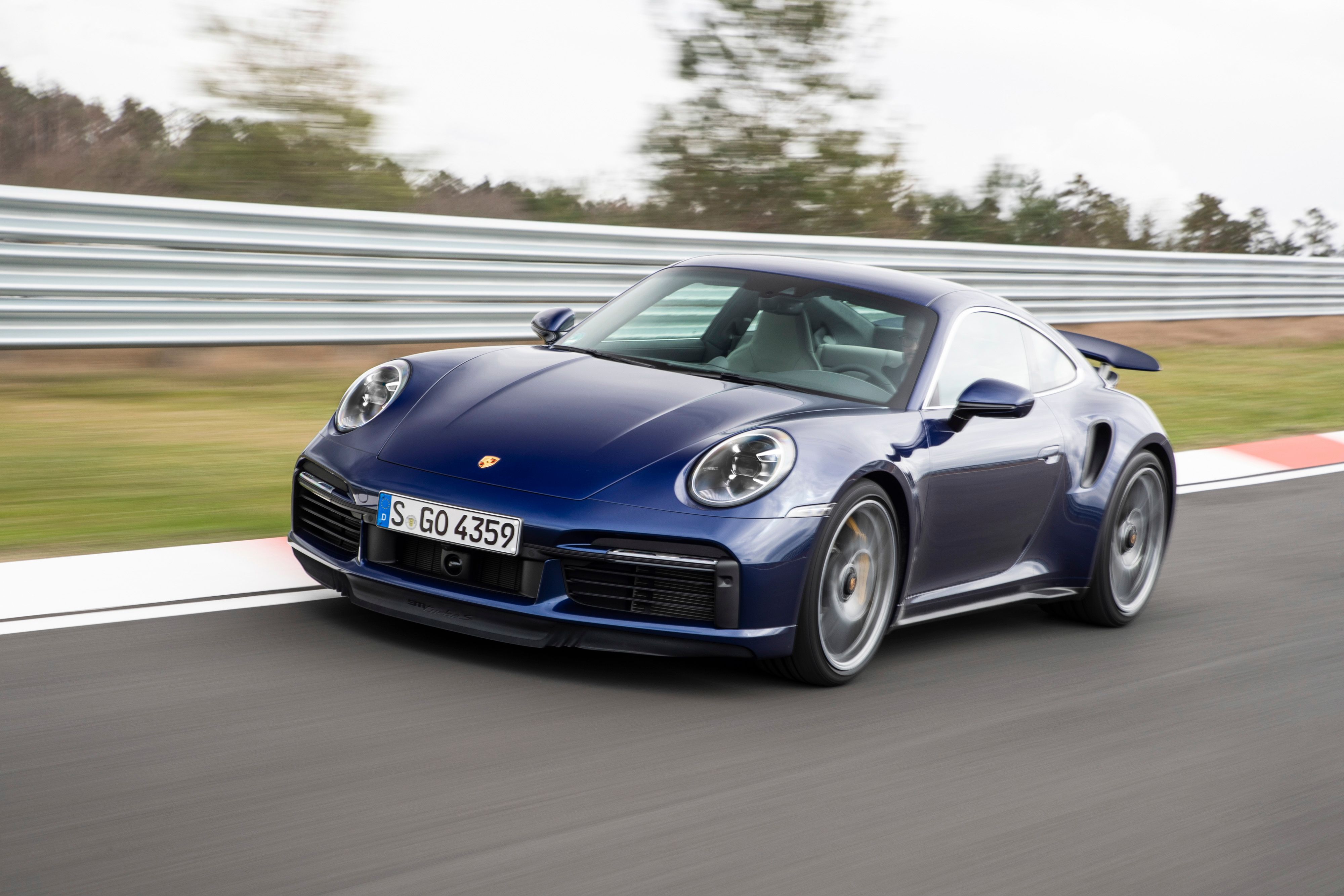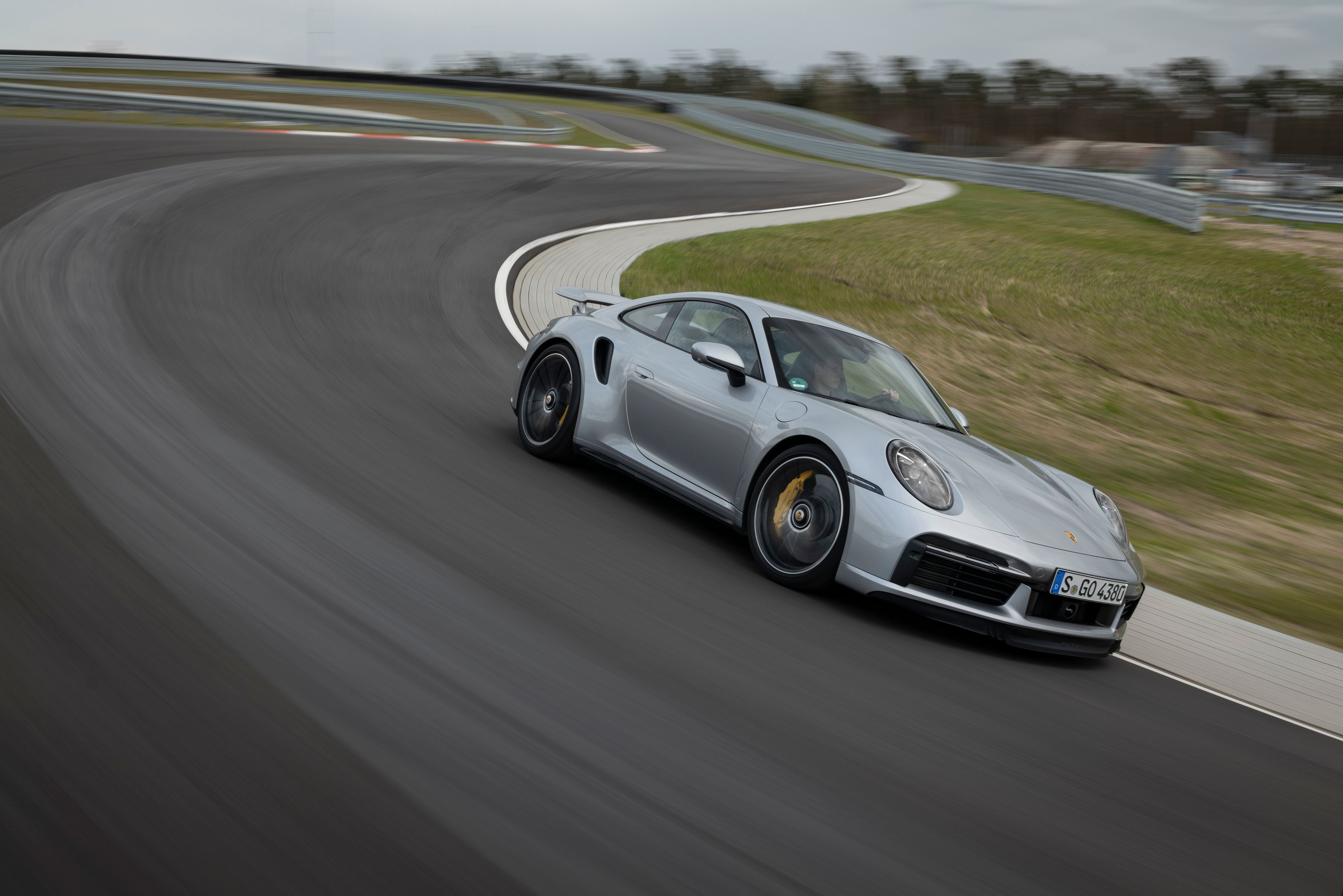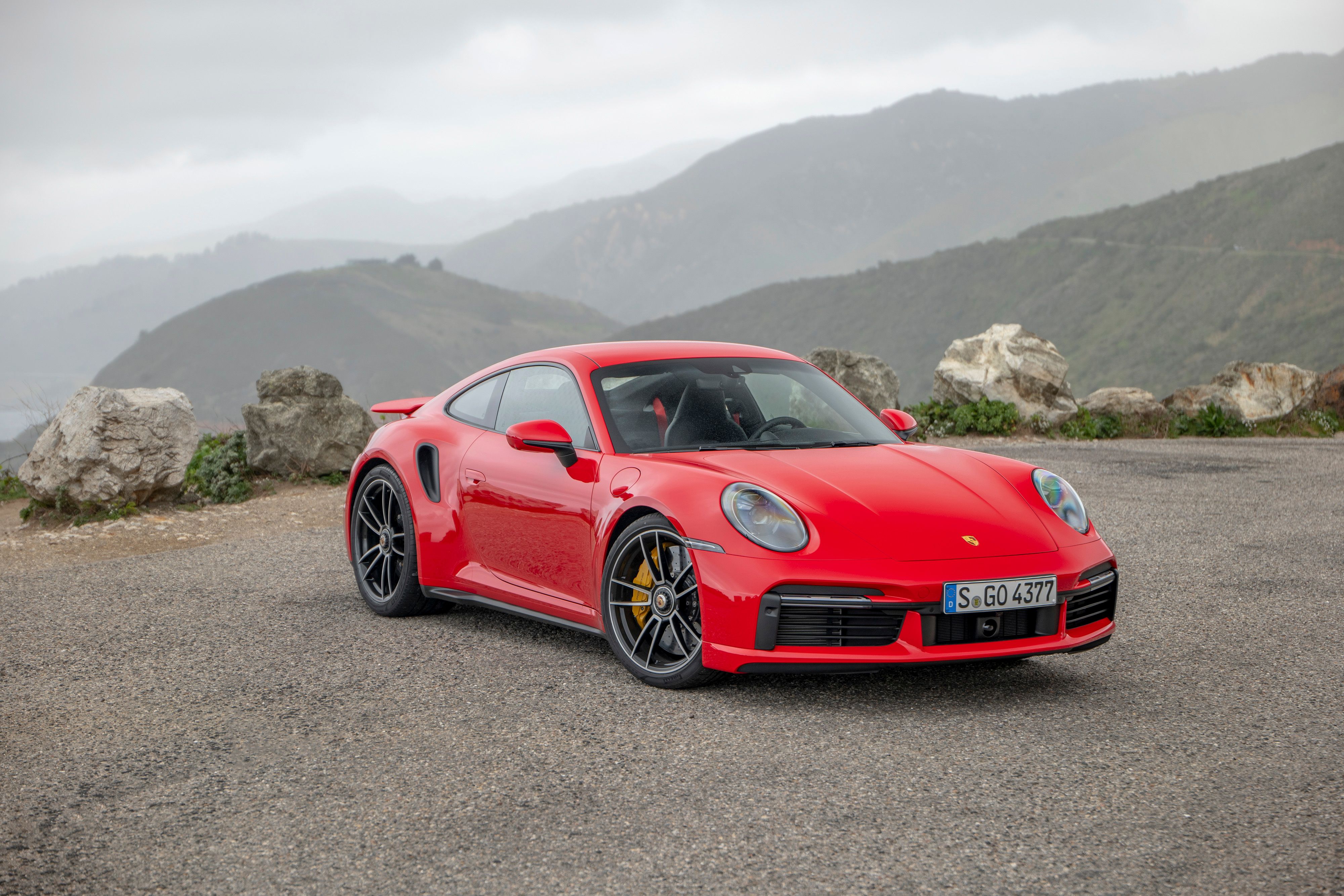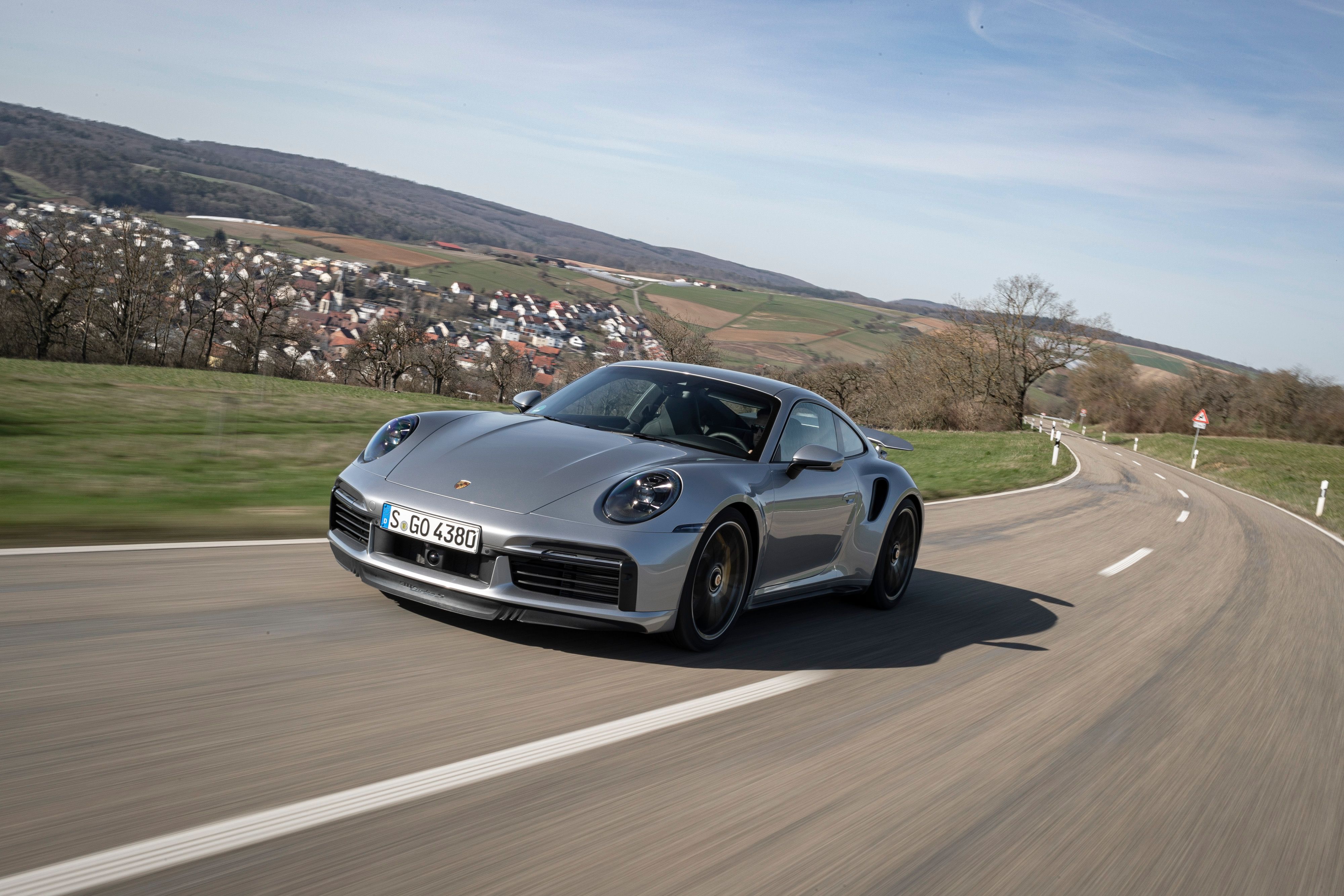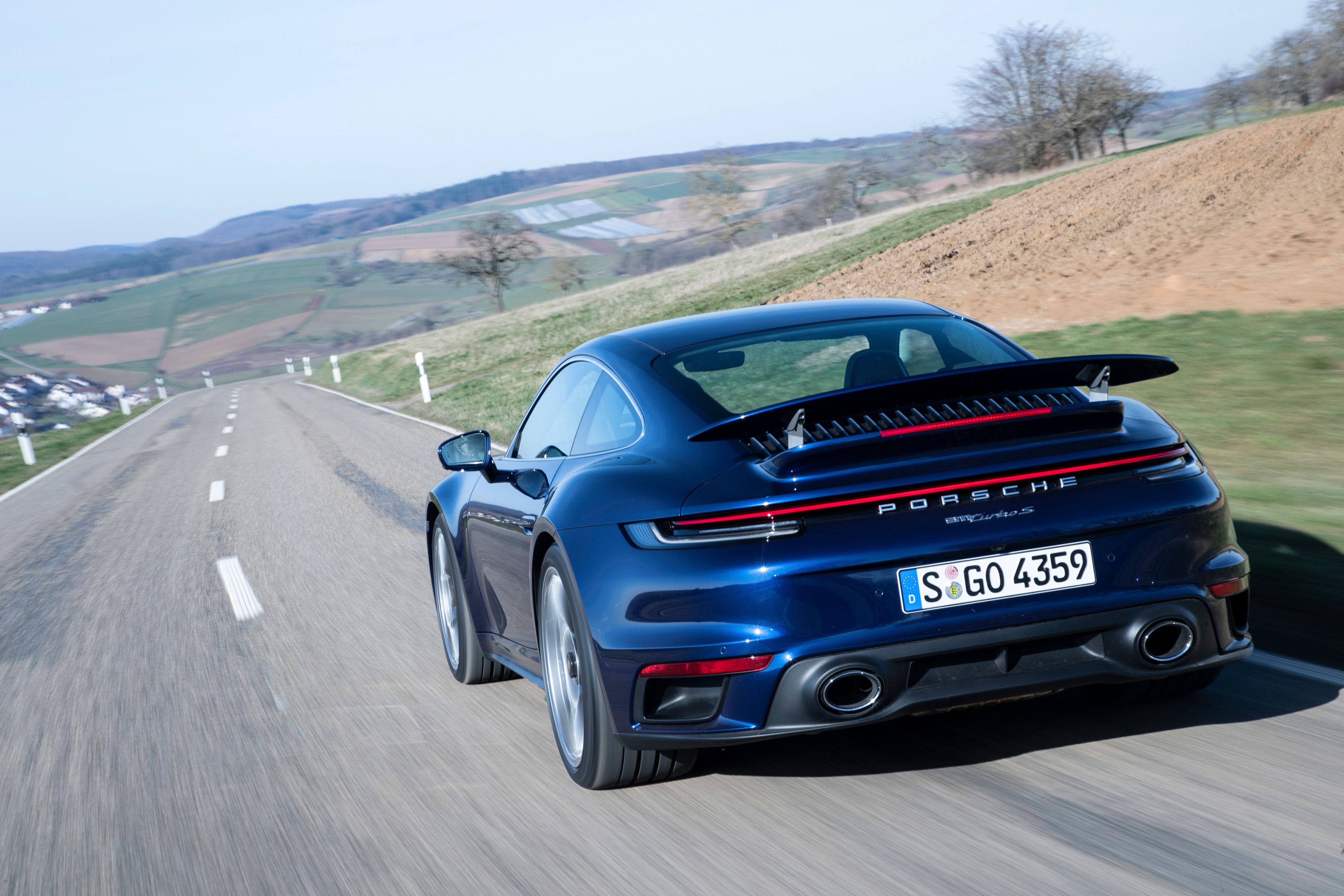The new 992 generation of the Porsche 911 Turbo S is already a fact and is faster than ever. Porsche also announced some interesting future plans for the Turbo S. Sometime in the second half of 2021, a lightweight version of the Turbo S might be coming.
Given that the Turbo S is already mind-blowingly fast, it’s interesting to see how much more performance the engineers would be able to squeeze. Would we get a stripped-down, more track-focused “Superleggera” version? To get an idea of what we should expect, it’s worth looking at the brand’s more track-oriented 911 – the GT3.
How Will Porsche Make the 911 Turbo S Lighter?
The GT3 was a light car, to begin with so when making the GT3 RS, the engineers had their work cut out for them, as there wasn’t much that could be removed. With the Turbo S, they certainly have more opportunities for weight-shaving. Despite its capabilities, the 911 Turbo S is not a typical supercar in that it doesn’t sacrifice all of its comfort in pursuit of speed and lap times. It even has rear seats and a usable luggage compartment. On the other hand, it’s not a gran tourer either, as it is sharper and more poised than a GT car.
Nevertheless, at 1,622 kg (3,576 pounds), it can do without plenty. Removal of the rear seats is a must for any lightweight version. The Turbo S has always had comfort in mind as well. As such, most or all of the sound insolation could be removed. A lightweight version of a car usually means lighter sportier, and often manually-adjustable seats. In addition, the dashboard and interior door panels would be replaced with ones made of carbon-fiber. Like on the GT3 RS, the audio and AC would be replaced with lighter versions of them.
Achieving the GT3 RS’s curb weight might be a tall order for the Turbo S, since it has all-wheel-drive and a twin-turbocharged engine, as opposed to the GT3’s rear-wheel-drive and naturally-aspirated 4.0-liter.
Chassis-wise, Porsche’s performance models have always boasted an incredibly capable setup. We can expect the lightweight Turbo S to have the same modular platform, but a dedicated chassis with even more rigidity is not out of the question. We might see the use of materials such as prepreg carbon-fiber and resin.
A similar faith could await the exterior body panels. Once again, the use of resin and prepreg carbon is probable, as other manufacturers have started utilizing such materials. Lightweight windows could also make an appearance. In addition, a new lightweight wheel design might be introduced, which would be unique to this version, and might feature a vortex effect for better aerodynamic properties.
How Much Faster Will a Lightweight 911 Turbo S Actually Be?
It’s safe to say that with the 911, Porsche has mastered the art of putting the engine in the wrong place. The German brand is praised for achieving a lot with little. Even the base 911 Carrera does the 0 to 60 mph (96 km/h) sprint in about 4.0 seconds.
Let’s talk about the Turbo S. Out of the box, it gives you some very impressive numbers. Its 3.7-liter twin-turbo boxer-six produces 650 horsepower at 6.750 rpm and 590 pound-feet (800 Nm) of torque at 2,500 rpm. In addition, the car is relatively light at 1,622 kg (3,576 pounds). For comparison, one of its direct competitors, the Nissan GTR weighs 1,722 kg (3,790 pounds) in its lightest Nismo version.
2021 Porsche 911 Turbo S specifications
|
Engine |
3.7-liter twin-turbo boxer-six |
|---|---|
|
Horsepower |
650 HP @ 6,750 RPM |
|
Torque |
590 Lb-FT @ 2,500 RPM |
|
Weight |
3,676 lbs |
|
0 to 60 mph |
2.6 seconds |
|
Top Speed |
205 mph |
Moreover, the engine hangs behind the rear axle which improves rear-wheel traction. Combine that with a sophisticated all-wheel-drive system and a lightning-quick PDK gearbox and you get 0 to 60 mph times of as little as 2.6 seconds, although lower times have been reported on a prepped surface. The top speed is equally impressive at 205 mph (330 km/h).
To get an idea of the potential performance gains of the lightweight Turbo S, it’s worth looking at other lightweight versions of 911 variants. The 991 GT3 and GT3 RS. Although the GT3 model was engineered more for track use, just like all other 911 versions, it boasts a unique-in-our time rear-engine layout.
Although the two versions have almost identical dry weights, the GT3 RS has 500 horsepower – 25 more than the standard GT3 – and 338 pound-feet (458 Nm), or slightly more than the 325 pound-feet (440 Nm) of the base GT3. Acceleration-wise the two versions are pretty much neck and neck, with the RS having a very slight advantage, despite the extra power. This could be due to the more aggressive aero on the RS, comprising of a bigger rear wing and additional vents on the front wheel arches. Although they create additional downforce which helps with stability, it also creates more drag, which slows the car down.
The lightweight Turbo S would most probably shine on race tracks, as is the case with the GT3 RS. Even on a small and technical circuit like Tsukuba, which is just 1.27 miles (2.05 km), the GT3 RS is almost a full second quicker than the standard version.
As for the power output, we already know that the sportier the 911s get, the more power they have. The GT3 RS for example has a 25-horsepower advantage over the standard GT3, the same goes for the current Carrera and Carrera S models, where the latter produces 50 horsepower more. With this in mind, we can expect the lightweight Turbo S to have a slight power advantage. That being said, it probably won’t be a big gain in power, as it will get too close to the 911 GT2 RS, which is currently the most extreme Porsche 911 out there.
What do all these numbers mean in figures? The new lightweight version could be up to 150 kg (330 pounds) lighter than the standard Turbo S. The more aggressive aero should increase downforce by about 50 percent which would significantly improve the already impressive 1.1 g of lateral acceleration of the Turbo S. A slight bump in power and torque can also be expected. Overall, the 0 to 60 mph sprint should be 0.2 seconds better, given that the car still uses the same all-wheel-drive system and PDK gearbox.

